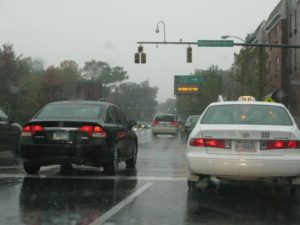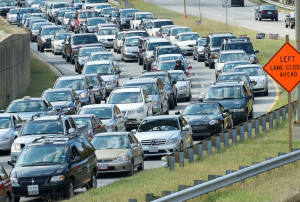 Getting from place to place by car or bus may be getting a bit easier in Arlington.
Getting from place to place by car or bus may be getting a bit easier in Arlington.
This weekend the county board is expected to approve a $4 million contract that will install six miles of fiber optic line along the Rosslyn-Ballston corridor, Columbia Pike and Glebe Road. It’s the first phase of a long-term traffic management project that planners hope will allow more intelligent, real-time management of traffic flow in the county.
In addition to connecting 54 county traffic signals, the fiber line will add capacity for traffic management tools like traffic cameras, motorist information signs, and traffic counters.
The initial phase of the project includes four new traffic monitoring cameras, at the intersections of Washington Boulevard and Wilson Boulevard, Columbia Pike and Walter Reed Drive, Columbia Pike and Glebe Road, and at Glebe Road and Arlington Boulevard (Route 50). An additional 17 cameras throughout the county could be installed by the end of the year, according to Traffic Engineering and Operations Bureau Chief Wayne Wentz. The new cameras would supplement the Arlington’s existing 29 traffic cams.
 The first phase of the project also includes a new motorist information sign — commonly used to relay real-time traffic information or advisories — on Route 50 at Pershing Drive. Additional signs are planned as more fiber is installed.
The first phase of the project also includes a new motorist information sign — commonly used to relay real-time traffic information or advisories — on Route 50 at Pershing Drive. Additional signs are planned as more fiber is installed.
Through enhanced monitoring and improved communication, the fiber lines will eventually lead to a smarter traffic management system that is able to automatically change traffic signal timings to deal with unexpected changes in traffic patterns.
“Our long-term plan for our intelligent transportation system is to measure traffic in real time and adjust traffic signal timing patterns on a daily or hourly basis,” Wentz said. “It will let us do more things to deal with congestion.”
Currently, traffic signal timings are adjusted systematically every three years. Individual re-timings are conducted more frequently in response to specific complaints, Wentz added, and systems are in place to deal with specific high-traffic events like the Fourth of July or an evacuation of D.C.
In addition to traffic management applications, the fiber lines will also be used as a common network backbone for county facilities, from schools to libraries to bus depots. The traffic monitoring systems will also be of use to public safety agencies, who will be able to “monitor special events and reduce response time to incidents,” according to a staff report.
When the multi-phase project is completed, fiber optics will have replaced 52 miles of “outdated and unreliable” copper lines from the 80s, at a cost of about $20 million. Most of the project is expected to be complete by the end of 2014, Wentz said.
Flickr pool photo by pderby

